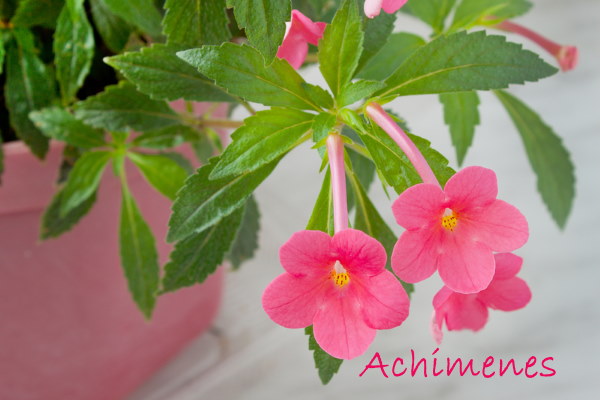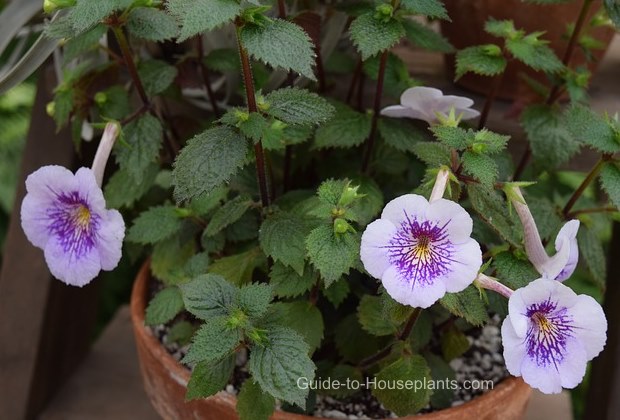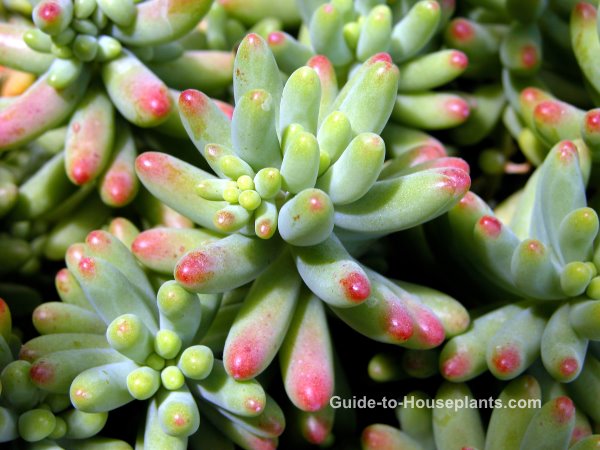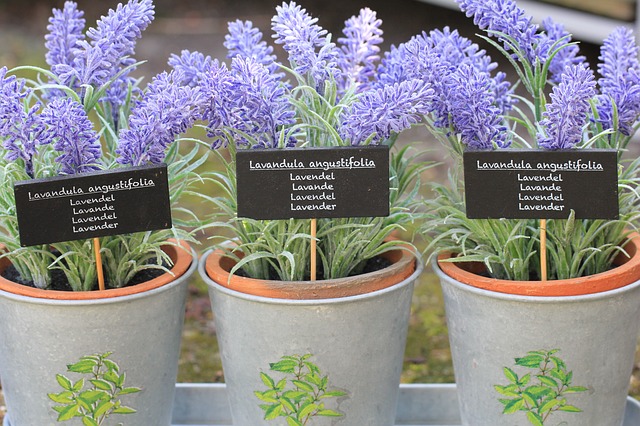How to Care for Achimenes Indoors
Showers of colorful flowers makes Achimenes a beautiful houseplant. Find out how to care for these beauties indoors, start new plants from rhizomes, and how to overwinter them for another spectacular show.
 These easy-to-grow tropical flowers add sizzling color to any room. Photo © Sever180
These easy-to-grow tropical flowers add sizzling color to any room. Photo © Sever180Get to Know Your Achimenes Houseplant
Achimenes is in the Gesneriaceae family, along with other showy favorites African Violet, Gloxinia and Lipstick Plant.
Some common names for this plant are Cupid's Bower, Hot Water Plant, or Magic Flower.
How it became known as Hot Water Plant: Rhizomes can be started into growth by dipping them in hot water before planting. The hot water bath isn't necessary, but this is where it got the name.
Show off your flowering plant in a hanging basket -- you'll enjoy showers of beautiful blooms from late spring till fall.
Dozens of hybrids are available to choose from, offering an abundance of red, pink, white, purple, violet-blue or yellow flowers. Some hybrids have contrasting striped throats.
Achimenes erecta is a popular variety. Despite its name, this plant has a trailing habit -- growing to 18 in (45 cm) -- with bright red flowers. A. longiflora trails up to 2 ft (60 cm) long, and has big, blue flowers with a white throat. A.l. 'Alba' and A.l. 'Ambroise Verschaffelt' both feature white flowers with purple lines down the throat.
Flowers appear on short stems that grow from the leaf axils. The tubular flowers grow up to 2 in (5 cm) long, and flare out into 5-petaled trumpets, up to 3 in (8 cm) wide. Each Achimenes flower lasts just a few days, but you'll enjoy continuous blooms for several months.
Deep-green, velvety leaves are carried in pairs, and can grow up to 3 in (8 cm) long with sawtoothed edges. The long stems are weak -- causing them to cascade over the edge of the pot.
Showcase those trailing blooms by displaying Achimenes on a plant stand. Those gorgeous flowers make a stunning accent to any brightly lit room.
 Dozens of varieties are available, including the purple-throated flowers shown here.
Dozens of varieties are available, including the purple-throated flowers shown here.Year-Round Indoor Care for Achimenes Houseplant
Flower buds dropping? Dry soil, dry air and extreme temps may cause buds and flowers to fall off. Keep the soil lightly moist while Achimenes is actively growing. Dry soil will also trigger the plant to go dormant. Indoor air can become extremely dry; fortunately, boosting humidity around your tropical plant is easy. Use a humidity tray or a cool-mist room humidifier.
Pinch your plant. Pinch stem tips when they are about 3-in (7.5 cm) long to promote branching. You'll get a fuller plant -- and more blooms -- this way.
Something bugging your plant? Wet, peaty potting mixes sometimes attract fungus gnats. And aphids may attack new growth; check the along the stems and new leaves for these pests. Treat any infestation right away to prevent them from multiplying and invading your other indoor plants.
Give it a winter rest. Achimenes will go dormant in the winter. When flowering tapers off in fall, reduce watering and allow the plant to die back naturally. Cut off brown, withered stems at soil level with sharp pruners -- don't pull them off with your hands because that may damage the rhizomes. Take rhizomes out of the pot and store them in a paper bag, in a cool (60°F/16°C), dry place until spring.
Repot every spring. Pot the dormant rhizomes in fresh potting mix (see Soil below), planting them 1 in (2.5 cm) deep, about 2 inches (5 cm) apart. Keep the mix lightly moist at all times.
Achimenes Care Tips
Origin: Central America
Height: 1-2 ft (30-60 cm)
Light: Set your plant where it'll get plenty of bright, indirect sunlight. Protect your plant from hot midday sun, which may cause brown scorch marks on the tender leaves. Filtered light from a south- or west-facing window will give it the light it needs. Don't have a sunny window? Achimenes also responds well to artificial light. Set plant about 8 to 10 inches under a fluorescent light for 12 hours a day. Switch off the lights at night -- these beauties need their rest, too. Some flowering plants won't set buds unless they get 12 hours of continuous darkness. It's a good idea to use a timer to come on the same time every day.
Water: Keep the soil evenly moist during the growing season, but not soggy which will quickly cause the rhizomes to rot. If the medium is allowed to dry out, the plant will go dormant. Don't water in winter. (See "Give it a winter rest" above.) Always use room-temperature water because cold water is a shock to this tropical native.
Humidity: Try to maintain at least 40-50% relative humidity around your plant. The best way to raise humidity around your houseplant is by setting the plant on a humidity tray or near a cool-mist room humidifier. Don't mist Achimenes because its soft, fuzzy leaves will trap water, causing dark spots on the leaves and fungus.
Temperature: Average room temperature 65-75°F/18-24°C; Achimenes will tolerate temps as low as 55°F/12°C, but anything above 80°F/25°C will cause flower buds to shrivel and dry up.
Soil: Use 3 parts peat moss-based potting medium and 1 part perlite and/or vermiculite. African violet potting mix is ideal.
Fertilizer: Feed every 2 weeks while plants are budding and blooming with high-phosphorus liquid fertilizer diluted to 1/4 strength.
How to Propagate Achimenes Plants Indoors
Achimenes can be propagated by stem cuttings or by rhizomes. Whichever method you choose, you'll get your plants off to a good start by using a seed-starting mix or a peat moss-based mix, both of which includes vermiculite or perlite.
Take 3 in (8 cm) stem tip cuttings in early summer. Cut the stem just below a node -- where a leaf is attached to the stem. Nodes contain the cells that will grow roots. Dip the cut end in rooting powder, then insert into moist potting mix. Cuttings take about 2-3 weeks to grow roots.
Divide rhizomes and pot them separately. Achimenes rhizomes look like tiny pinecones. Because they are small, so don't be afraid to crowd them a bit for a full, lush container. Plant rhizomes 2 in (5 cm) apart, covering them with 1 in (2.5 cm) potting mix. Keep potted rhizomes lightly moist and warm (around 70-75°F/21-24°C) until you see new growth, then resume normal care. Discard any rhizomes that are small or shriveled -- they're not worth repotting.

